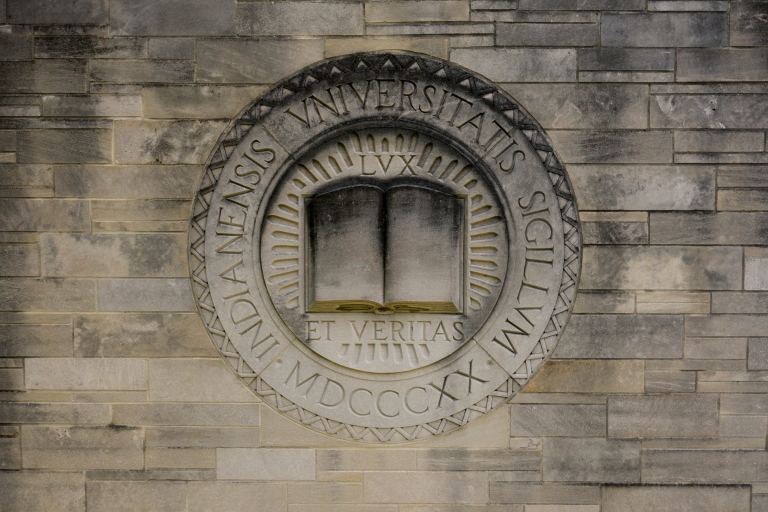EDITOR’S NOTE: This story was updated Dec. 9 to reflect the name of the Irsay Family Research Institute and additional details.
The Indiana University Board of Trustees heard an update on the university’s greenhouse gas emission reductions and future strategies during a December committee meeting.
Thomas A. Morrison, vice president for capital planning and facilities, told the trustees that a steady and meaningful reduction in greenhouse gas emissions has occurred over the past decade at IU’s campuses, with reduction in electricity use as a primary driver.

Significant utilities cost savings also were realized through repair and rehabilitation projects, which lower buildings’ operational costs and increase their energy efficiency through updates to building envelopes, windows and roofs; modernized energy delivery and distribution including heating and cooling; and installation of LED lighting.
Building renovations coupled with strategic space planning and repurposing of previously underutilized space further contribute to reductions in consumption per user. IU also will continue to analyze climate data to understand and respond to future impacts on demand and energy use.
Morrison presented five recommendations as future strategies for reducing emissions and use:
- Space planning: This includes frequent analysis to decommission or redeploy unused or underutilized space, repurposing or renovating current buildings before considering new construction, use of smart scheduling to optimize building usage by avoiding high-use periods, consolidating course scheduling into fewer buildings in the summer, and modifying air handling during campus closures or when classes are not in session.
- Retro-commissioning: As a component of a comprehensive repair and rehabilitation strategy, this corrects the inevitable drift in a building’s efficiency from the original design. The most common corrections resulting in annual utility use savings are in air handling, distribution and temperature adjustments for occupant comfort.
- Combined heat and power: These systems, which produce both heat and electricity from a single fuel source, provide more energy from the same amount of fuel. This system would primarily assist with emergency backup power for critical research and operation functions.
- University fleet modifications: This includes fuel reduction strategies such as rightsizing the number and type of fleet vehicles and prioritizing use of biofuels.
- Continued analysis of renewable energy sources: IU will continue to analyze sources such as solar panels for cost, payback and energy production.
During their business meeting, trustees also approved renovations to the second and third floors of Sarah Parke Morrison Hall on the Bloomington campus. The renovated space will house the new Irsay Family Research Institute, designed to be the leading national center for addressing the stigma surrounding mental health and other health challenges
The renovation will include the creation of administrative and research project offices, conference rooms, hoteling spaces, and a data center with related support areas. The data center will be constructed to meet federal physical and data security standards for housing a Federal Statistical Research Data Center, which was awarded to IU Bloomington by the U.S. Census Bureau. Other databases may be held and curated as well. Mechanical systems upgrades and improvements to electrical, plumbing, restrooms, fire alarm and data infrastructure will be included in the project, along with updated finishes and lighting in response to infrastructure improvements.
Beth Feickert is a capital planning project specialist for the IU Office of the Vice President for Capital Planning and Facilities.

